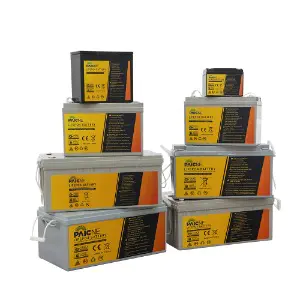Lithium Iron Phosphate Battery technology is widely recognized for its stability and long cycle life, making it a preferred choice for many energy storage and electric vehicle applications. Despite its inherently safer chemistry compared to traditional lithium-ion batteries, it is still susceptible to risks under operating conditions such as overcharging, over-discharging, or short circuits. Understanding these safety risks is essential for engineers, system designers, and end-users to implement effective mitigation strategies and ensure reliable performance.

Overcharging occurs when a battery is charged beyond its voltage threshold, which can result in increased internal pressure, gas generation, and potential cell swelling. For Lithium Iron Phosphate Battery, the risk of thermal runaway is significantly lower than for other lithium chemistries, but prolonged overcharging can still degrade the cathode and electrolyte, causing reduced cycle life. In addition, overcharging can accelerate side reactions that produce heat and increase the possibility of electrolyte breakdown. Therefore, precise voltage control and robust battery management systems are critical in preventing damage and maintaining operational safety.
Over-discharging refers to discharging a battery below its safe voltage. In Lithium Iron Phosphate Battery systems, over-discharge can cause irreversible chemical changes in the anode, causing capacity loss and decreased efficiency. While the thermal risk is minimal, repeated over-discharge may trigger internal resistance increases and impair the battery’s ability to deliver power effectively. Over-discharge also heightens the need for careful monitoring by battery management systems, as operating beyond safe limits can compromise both performance and long-term reliability.
Short circuits occur when there is an unintended low-resistance path between the battery terminals, allowing excessive current to flow. In cases, this can generate significant heat and potentially cause localized damage to the battery structure. Although Lithium Iron Phosphate Battery has a lower likelihood of catching fire compared to conventional lithium-ion cells, repeated or prolonged short circuits can still damage the electrodes, compromise the separator, and result in reduced capacity. Proper protection mechanisms such as fuses, current limiters, and high-quality cell design are essential to reduce the risks associated with short circuits.
To manage these risks, Lithium Iron Phosphate Battery systems rely heavily on advanced battery management systems (BMS). Overvoltage and undervoltage protection, current monitoring, temperature sensors, and cell balancing are all employed to prevent unsafe conditions. Additionally, careful selection of high-quality electrolyte and separator materials can enhance tolerance to abnormal events. In industrial or automotive applications, redundant safety systems and regular monitoring protocols further ensure that batteries operate within safe limits, even under unexpected stresses.
While the safety profile of Lithium Iron Phosphate Battery is robust, awareness of potential risks under overcharge, over-discharge, or short-circuit scenarios remains critical. System designers must incorporate appropriate protection mechanisms, safety margins, and monitoring strategies to safeguard performance. Users also need to understand the operational limitations and follow recommended charging and discharging procedures. By addressing these risks proactively, it is possible to fully leverage the advantages of this battery chemistry without compromising safety or reliability.
Lithium Iron Phosphate Battery offers enhanced stability and reduced thermal risk compared to traditional lithium-ion chemistries, but conditions such as overcharging, over-discharging, and short circuits still pose challenges. Understanding these risks and implementing effective management strategies are essential for maintaining battery health, safety, and performance. Through careful system design, monitoring, and protective measures, the safety advantages of this battery technology can be improved across diverse applications while reducing potential hazards.
Get to know quickly
We are a professional lithium iron phosphate battery, solar energy storage system, industrial and commercial energy storage system manufacturer.
 +86-133 3592 3377
+86-133 3592 3377
 +86-4008833583
+86-4008833583
 Email: [email protected]
Email: [email protected]

Copyright © Zhejiang Paichen Energy Storage Group Co., Ltd All Rights Reserved.
Battery Energy System Manufacturer
